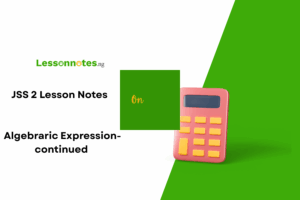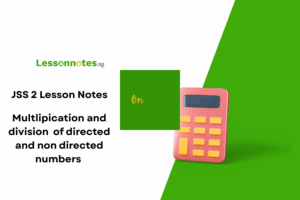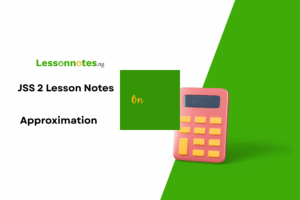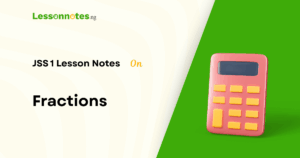Estimation JSS1 Mathematics Lesson Note
Download Lesson NoteTopic: Estimation
Estimation may be explained as a rough or sensible guess for a value or calculation. Although the estimated value is not correct, it gives us an idea of what the correct answer should be.
The common units of length are;
- Kilometres (km)
- Metres (m)
- Centimetres (cm)
- Millimetres (mm).
The standard units of Mass are;
- Tonne
- Kilogram (kg)
- Gram (g).
The standard units of Capacity are;
- Litre (l)
- Centilitre (cl)
- Millilitre (ml)
It is important to be able to choose the most appropriate metric units of measurement to use.
Example: To measure distances less than a meter, smaller units such as millimeters (mm) and centimeters are used; to measure large distances, meters and kilometers (km) are used.
State the metric units of the length you would use to measure the following:
(a). Length of your classroom = meter (m)
(b). Length of your fingernail in millimeters (mm)
(c). Your height = centimeter (cm)
(d) Distance between Lagos and Kaduna = kilometers (km)
(e). the height of a building = meter (m)
SIGNIFICANT: TO ROUND OFF A NUMBER, CHANGE 0, 1, 2, 3, AND 4 TO 0, WHILE 5, 6, 7, 8, AND 9 TO 1, AND ADD IT TO THE NEXT NUMBER
Example 1: Round off 492.763 to (a) 3 s.f., (b) 3 s.f., (c) 2 d.p., (d) 4 d.p
Solution:
(a). 492.763 = 490 (since the third number is 2, it has changed to zero.)
(b). 492.763 = 493 (the 2 has changed to 3 because 7 has changed to 1 and been added to 2 to become 3)
(c).492.763 = 492.76 (in decimal points, we count after the point).
(d). 492.763 = 492.7630 (since the number is not up to 4 d.p., we add zero to it.)




















